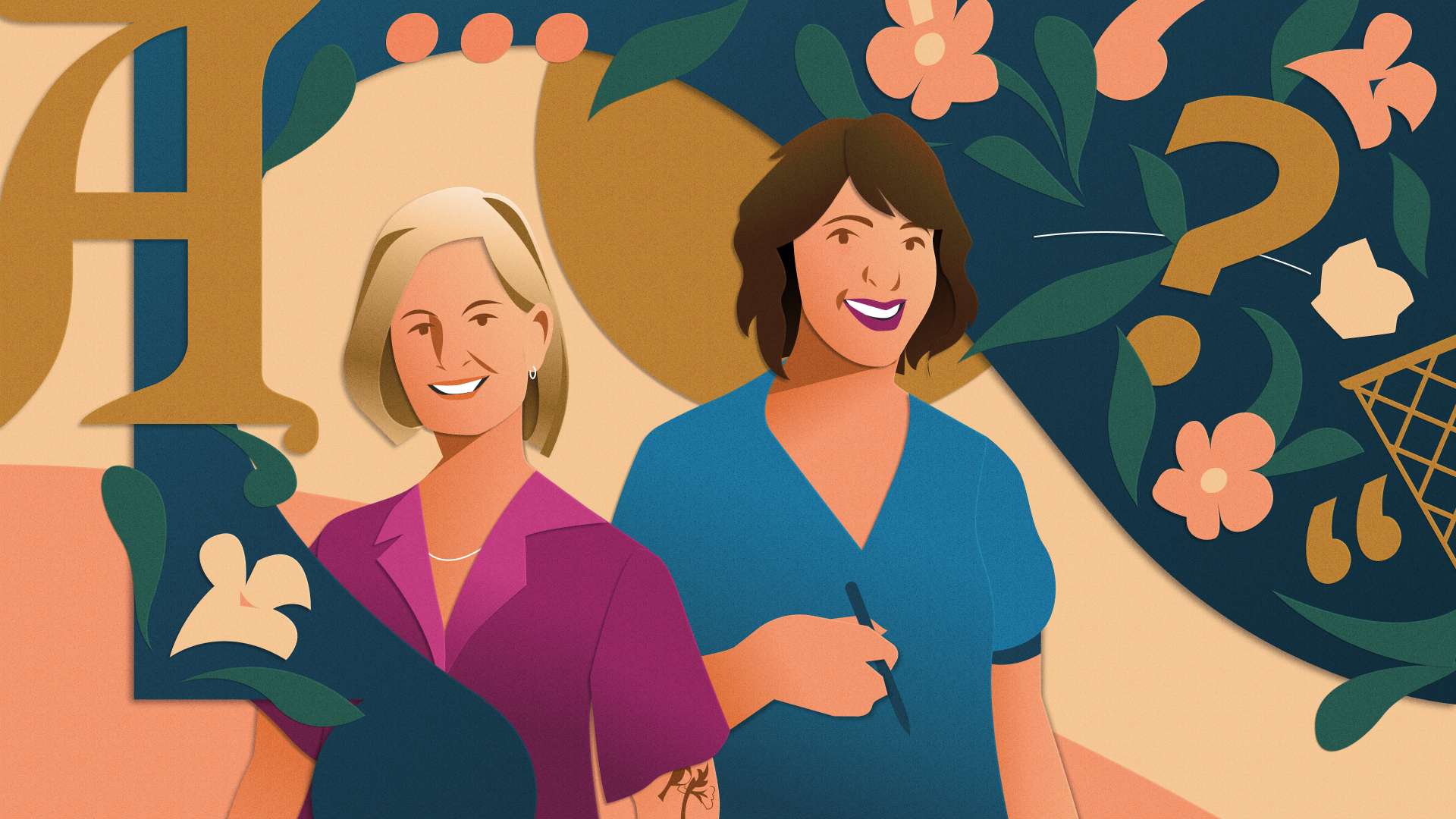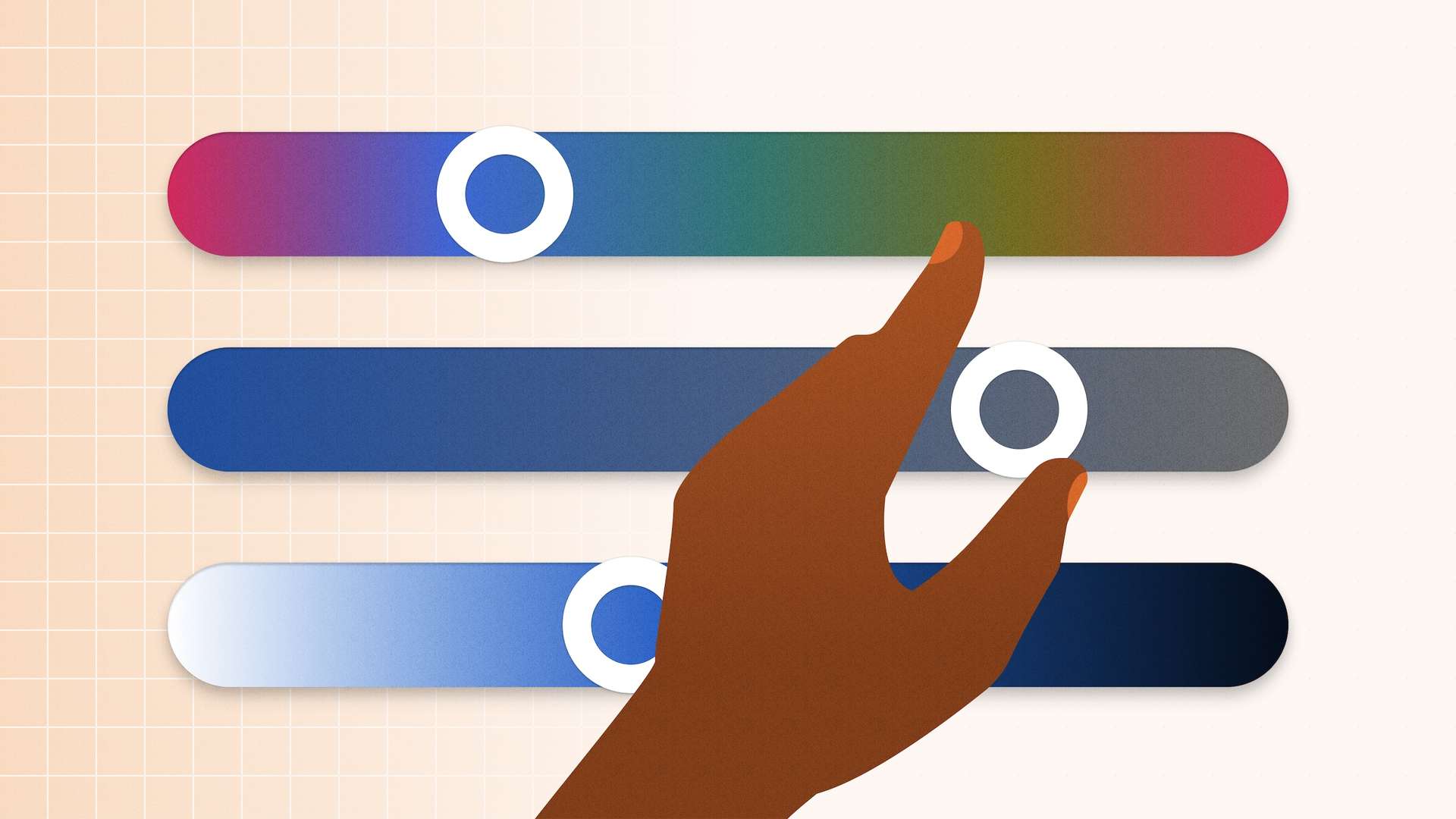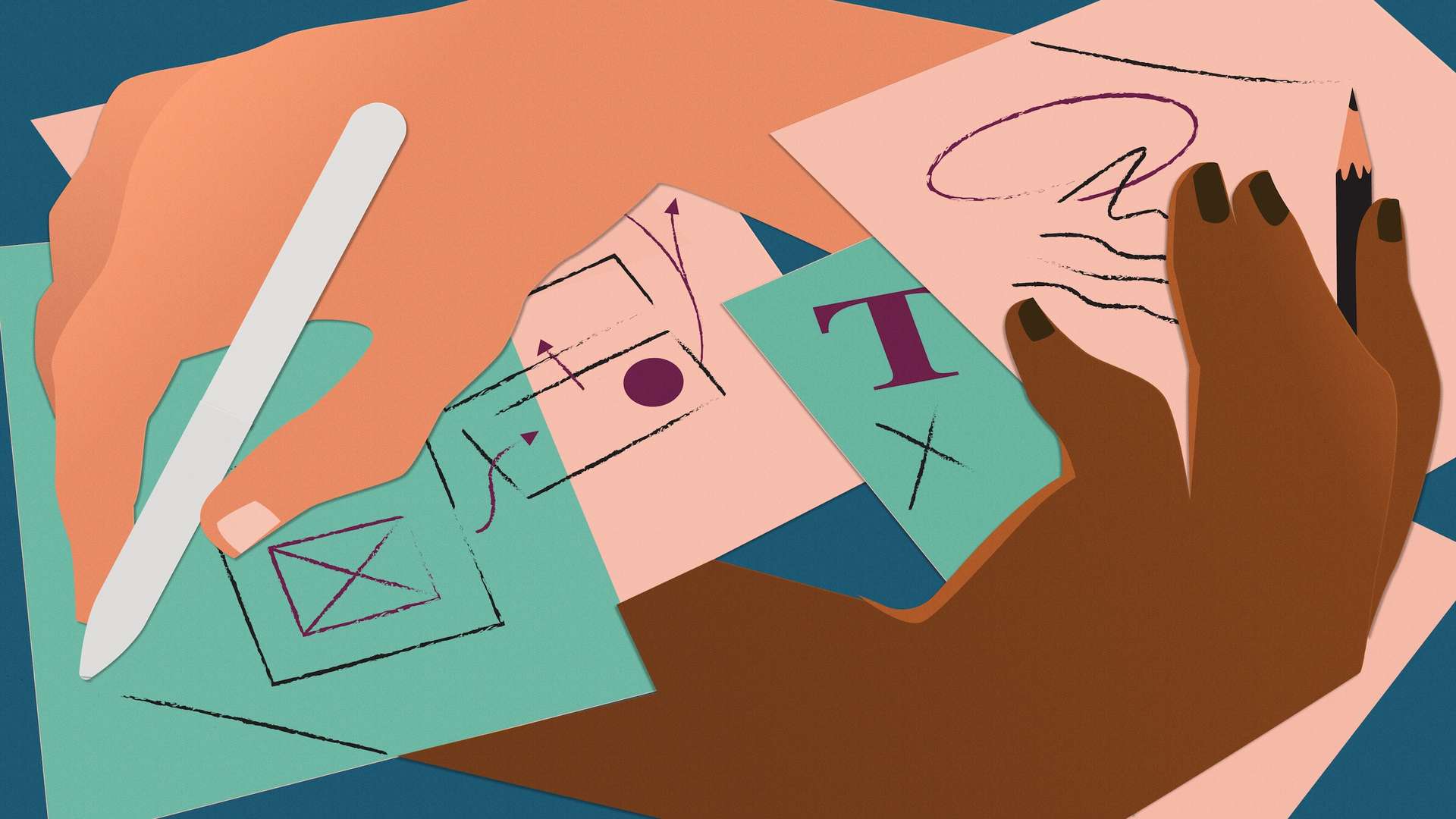Lots of people think about doing it, but the reality of getting from an idea to a published book is full of mystery to anyone who’s never done it. That’s where Katel LeDû and Lisa Maria Marquis can help. The CEO and managing director, respectively, of tech industry publisher A Book Apart have released their own book, aptly titled You Should Write a Book. In it, the two women provide a realistic blueprint for UX professionals thinking of expanding their careers by writing a book.
I sat down with LeDû and Marquis to talk about the meta-ness of a book about writing a book, reaching authors for under-represented communities, and how to overcome those initial hurdles and start writing.
What got the two of you together to write a book?
Katel LeDû: Lisa Maria and I have worked together for the past six years. Recently we started talking about things we could offer as a publishing company other than—obviously—publishing books and supporting authors. We started toying with the idea of editorial office hours. We’d hop on to Zoom and do Q&As with whoever was interested in asking questions about publishing.
I suggested that we could do three or four of these. For the first one, we could talk about ideas and how to figure out topics. The second one could focus on structure, pitches, and proposals. The third one could be about deciding whether to self-publish or work with a publisher.
Lisa Maria Marquis: My job as a managing editor is to look at content and say, “There’s a book here,” and that’s what happened. Katel put together so many ideas for these virtual events and I said, what if instead of dealing with all the logistics of a virtual event, you just wrote it all down?
What are your goals for this book?
KL: One of the main goals is to encourage and actually support people who have historically not felt supported, invited, or even considered by publishers to write books. We love talking to new authors and helping them feel good about the book they’re pitching.
LM: We were looking at operationalizing that. How do we encourage proposals? How do we encourage people to pitch us book ideas? How do we encourage the right proposals to come in? Because people will often just send their pitch to every book publisher. We get a lot of pitches that aren’t about tech or the web.
We wanted to help potential authors be more intentional with their proposals and demystify the process so that they know what we’re looking for. Because their success is our success.
We want to make sure the processes that go into writing and publishing a book are clear to people who’ve never done it so that it feels less daunting and more accessible, specifically for folks who have been marginalized or pushed out by both the tech industry and the publishing industry.
We’re being very intentional with A Book Apart as a platform and a publishing house to say we want books that reflect the true diversity of people who work in the tech industry and the people who read books about working in the tech industry.
We still have a lot of work to do, but we’re trying to make sure that we walk that talk.
How would you describe your ideal reader for this book?
LM: Someone who wants to write a book but feels daunted and doesn’t understand the process. Someone who’s curious, and is interested in getting a feel for the work and the joy that goes into it.
Our examples are mostly drawn from tech books because that’s our experience.
There’s a lot about marketing, editing, and drafting that isn’t specific to tech. It applies to any creative project, really, not just writing.
KL: There will be nuances depending on the types of pitches, but the logistics and the frameworks of pitching, understanding what contracts look like, those kinds of things are not specific to tech books.
LM: We also thought about readers who’ve felt marginalized by the publishing or tech industries. Our book can support everyone, but we particularly want to make sure it supports people who have historically felt like they weren’t author material, that they weren’t allowed to write a book, that it was too lofty of a goal for them, that’s the person we want to speak to.
Why is demystification so important to you?
KL: When we discussed what we would cover we asked ourselves, how do we share our secrets? How do we share what we know that’s been kept from the general public—because it has gotten really easy to self-publish.
It’s easier now to put your ideas into the world and be confident about them, but I have found it’s not obvious to most people.
LM: A Book Apart takes the approach that brief, practical books can teach you things that you can implement immediately at work. That’s demystifying. That’s taking a process that isn’t well understood and making it clear.
Now we’re doing the same for publishing. There’s no secret cabal guarding the writing and publishing process—but sometimes it feels like that. There are so many myths about book writing and publishing. And there’s really no way to knock those myths down until you write and publish a book, then you learn all these things. We’re able to see both sides of the writing and editing process. We can tell people what it’s like and get some of those myths out of the way.
All these myths get in the way. Like, I’m not good enough to write a book. Or not smart enough. Or old enough, don’t have enough experience to write a book. I’m not a thought leader. I’m not working at a cool enough company. Writing a book can be a milestone for someone’s career or a personal goal. It’s easy to build it up. The bigger it gets, the harder it feels to actually approach it, break it down, and reach that goal.
These ideas we have of what an author is and who can be an author—none of that matters. None of that’s true. Everyone is valid and everyone has something to say. We all benefit from having more voices in the mix.
KL: You also have to acknowledge what’s real. If we tell you we’re going to share our experience, we also have to acknowledge that this is not just a cheerleader book. We’re not just saying, “You can do it! All you need is six months of time and a cabin in the woods!”
There are a lot of obstacles. A big part of demystifying something is acknowledging what the challenges are. I hope we have more conversations about it and get people to share how they navigate those challenges.
You say this isn’t a cheerleader book but—to continue the sports references—it sometimes feels like a coach in book form. How did you bring your previous coaching experience to writing this book?
KL: I’ve found some people aren’t quite sure about coaching. They think it’s a thing where they have a few sessions and then accomplish a goal. They check it off their list and that’s it. But it’s not like that. I practice coaching by thinking about making big shifts in the way I’m doing something, in the way I think, and in how I approach life.
The book gives concrete advice for writing a book. There are multiple ways to bring something like this into being. At the same time, there are things that are necessary. For example, a book doesn’t happen without some kind of organization. We address the fact that some people hate outlines, but you’re going to have to do an outline of some sort.
We also ask a lot of questions. That’s the biggest tie between coaching and the book. Lots of questions to help create direction and guidance, rather than being prescriptive.
LM: It also reflects our approach to editing books. When we work with authors, it’s important for us to respect them, their projects, and their goals. While we help them fit within the ABA approach, we still want their voice to shine through.
That balance is achieved by asking a lot of questions, providing lots of space, helping them slow down and think, and creating opportunities for self-reflection.
So much of the work we do, especially in the early stages, is helping authors figure out what they’re trying to say. Then we get into the best way to say it. But that first step is about conceptualizing and requires working through feelings and experiences to figure out what’s at the core of this book. If you haven’t come to terms with your ideas and made them concrete in your mind, then the book is going to be a struggle, and the editing is going to be tough.
How would you speak to somebody who says, “There’s too much going on right now, I can’t focus on writing a book”?
LM: I would ask the writer to get specific about the things that are stealing their focus and think about how to address those.
Sometimes when people talk about focus what they really mean is they don’t have time. That’s a different thing that requires a different remedy.
KL: I just want to add that this book is called You Should Write a Book. It’s not called You Have To Write a Book. At several points in my career, I’ve felt I should write a book about X. It felt completely half-baked. Maybe it would look good on my resume, but that’s not a good enough reason or the only reason to write a book.
LM: What are you driven to write about? Why are you driven to write? What is it that’s motivating you? You have to go where your passion moves you.
And if that means that you have a tech book in you, fantastic. We’ll do everything we can to support that. If that means you have a poem in you, do that! And if there’s a topic where you’re like, well I think I should write a book about this, but you don’t love the idea, that’s not the right topic for you. It shouldn’t feel like pulling teeth. A passion for the topic can carry you pretty far.
The book includes so many interesting facts and tips, even for someone with very limited knowledge of the publishing industry. Were there any topics you particularly wanted readers to understand?
KL: I really hope the marketing part helps. You have to do marketing. It’s OK to talk about something really awesome that you’ve done, this thing that you put so much work into.
LM: In the first chapter, we talk about how very white the publishing industry is. We knew this, it’s not a surprise but when you see the studies that have been done and the numbers coming out of the industry, it’s appalling. And we have to do better.
I like how A Book Apart books have a very specific format. Not too long, very practical, focused on tech. Why do you think it’s important to structure books that way?
KL: Super short answer is, we believe constraints are good.
LM: We’re interested in books that you can pick up on a Friday afternoon and go to work Monday morning having learned something new that you can apply that day.
KL: On the topic of patience, when something gives you what you need in an enjoyable way—and doesn’t take a really, really long time—that’s cool.
ABA books often feel like an introduction to a topic that a reader can expand on if they like. You provide such great resources for further reading in this book. Were there any resources you found inspiring? Anything you didn’t expect?
KL: I was surprised at how many cool, virtual book clubs there are and the communities that have come out of those virtual book clubs.
When I look at the resources as a discrete piece of the book, it’s cool to see how many different ways you can get involved in writing, in the practice of writing, and talking to other folks about writing. It’s truly a craft.
LM: We are going to share some of the writing resources from our book online, so you don’t even need to read the book to get the resources. But we’d like it if you read the book!
KL: Those resources will be a living thing that we add to. Hopefully, we’ll learn what others rely on, too.
What was it like writing a book with a coworker?
KL: It was one of the coolest adventures of my life. That’s the truth.
LM: Our personal experience was that it was amazing and worked so well. Not all working relationships are like that.
Every partnership is different because of the people involved. We’ve published a few books with dual authors. We have a couple of books in progress with multiple authors. None of them are the same in terms of the dynamic.
I’ll speak to what’s made the partnership between us so successful. We wanted the same things. A lot of folks—especially if they work closely —think they want the same things, but you need to be clear about not just wanting the same things, but prioritizing the same things. Having that kind of alignment is rare. We lucked out.
KL: Trust is huge. You have to be able to trust each other. We’re both going to turn in our drafts on time, and we’re going to keep each other aware of where we get stuck, and when we felt there’s something new we needed to explore. We were also really, really honest about what our strengths and weaknesses were.
LM: We trusted each other to do the groundwork for our chapters, and to respond to that work. There was a lot of collaboration, a lot of back and forth. We granted each other a lot of grace.
It’s hard to write a book, hard to write a book with another person, and hard to write a book with another person during a pandemic. It’s hard to write a book with another person during a pandemic under capitalism. There’s so much that gets in the way that you have no control over. I think there were moments where Katel and I would get on our check-in call, and just look at each other and say, I got nothing.
My tank is empty. I wrote nothing. What am I going to do?
KL: We’d be like, let’s try again tomorrow.
LM: It required understanding each other and allowing things to move at the pace we needed to make it happen.
KL: If you’re considering this kind of collaboration, imagine working with this person, and still liking this person for the next 13 months. You need to gauge it that way.
LM: How do you feel about letting this person see the worst thing you’ve ever written? The worst, most mistaken language, the most boring cliche, awful draft. You have to be prepared for that.
You have to feel like, I’m going to share this with them. And they’re going to tell me it’s the worst thing and I’m still going to like them.
KL: And you’re going to be like, yeah, actually, that is terrible. Thanks for that, moving on.
LM: It’s tough to be vulnerable with someone else, and that’s what writing a book is.
But it still translates well for somebody who might want to write books, because that sounds like the kind of vulnerability a UX or content designer sometimes has. A pressing moment with a tight deadline. A teammate hovering over you when you’ve got to deliver wireframes?
LM: Yes, for sure. I think a lot of folks who work in tech have something to bring to this.
Anything else you’d like to say about the book?
KL: It’s early, but we’re looking at launching a writing circle that includes lots of skill levels that invite community folks to write with other folks. And I think we’re going to do some editorial office hours, Q & A kind of thing.
LM: There’s more to come. We wrote the book to accomplish certain things, but writing the book alone does not accomplish those things.
There’s got to be continued support, ideas, and experiments. We need to see what works for the community and what’s most effective for supporting would-be authors. Maybe that’s going to be writing circles, maybe it’s going to be live Q&As.
KL: We want to add a piece of further engagement for people who want to write books. Accountability is a piece of it, too. It’s not just being off on your own, it helps when you have an anchor point to keep doing the work.





